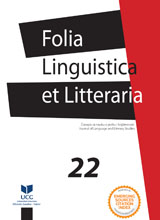KNJIŽEVNOST I ARHITEKTURA: ALESANDRO BARIKO – GRANICE PROSTORA
LITERATURE AND ARCHITECTURE: ALESSANDRO BARICCO – BOUNDARIES OF SPACE
Author(s): Slavica Stamatović VučkovićSubject(s): Cultural history, Architecture, Other Language Literature, Evaluation research, Theory of Literature
Published by: Filološki fakultet, Nikšić
Keywords: boundary; space; spatiality; space “in-between”; relation “outside – inside”;
Summary/Abstract: Alessandro Baricco keeps reminding us that our fragile and evanescent existence is primarily a spatial one. In parallel with specific inter-relations, his “imaginary-real” characters are creating, through a profound, researchoriented, existential wondering and through a special multilayered relationship with the surrounding space which is sometimes rational, sometimes irrational; frequently focused on the phenomenon of spatial boundaries, which is the very interface with “architecture – envelope,” a topic of paramount importance in particular for the theory of architecture and space. This wondering, resulting from the need to observe and watch, runs through almost all of his novels, starting with the “idea” (in fact, a real-life event) which occurred in mid 19th century, of a “crystal palace” and the use of large glass surfaces which obliterate the “outside – inside” boundary, as a harbinger of a new, contemporary era (Lands of Glass, 1991), through issues related to natural phenomena – “where does the sea end?” (Ocean Sea, 1993), all the way to a unique “poetic-technical” description of a specific space of a house – “the porch”, as an answer to the question “where does a home begin?” (City – a novel “envisaged as a city in which stories are neighborhoods while characters are streets”, 1999).
Journal: Folia Linguistica et Litteraria
- Issue Year: 2018
- Issue No: 22
- Page Range: 149-157
- Page Count: 9
- Language: Bosnian, Croatian, Serbian

